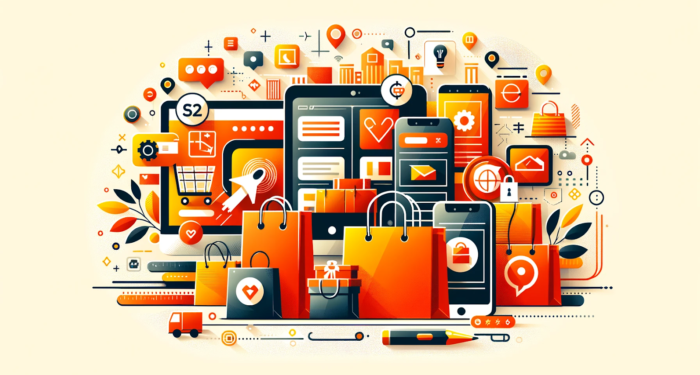the ever-evolving digital landscape, businesses are constantly seeking innovative strategies to enhance their online presence, streamline operations, and deliver exceptional customer experiences. One such game-changing approach that has captured the attention of industry leaders is headless commerce. This cutting-edge architecture decouples the front-end user interface from the back-end e-commerce functionality, empowering brands to create highly personalized and seamless omnichannel experiences.
As the demand for seamless digital experiences continues to soar, many companies are embracing headless commerce to unlock new realms of flexibility, scalability, and innovation. From global retail giants to niche artisanal brands, this revolutionary approach is reshaping the e-commerce landscape, enabling businesses to stay ahead of the curve and meet the ever-evolving needs of modern consumers.
In this comprehensive article, we delve into the world of headless commerce, exploring real-life success stories that showcase the transformative power of this innovative technology. Brace yourself for a captivating journey through diverse industries, where visionary brands have harnessed the potential of headless commerce to redefine customer engagement, drive growth, and achieve remarkable milestones.
Unveiling the Essence of Headless Commerce
Before we explore real-world triumphs, it’s crucial to grasp the fundamental concept of headless commerce. Traditionally, e-commerce platforms have followed a monolithic architecture, where the front-end presentation layer and back-end functionality are tightly coupled, resulting in limited flexibility and scalability.
Headless commerce, on the other hand, separates these two components, allowing businesses to leverage best-in-class solutions for both the front-end and back-end systems. This decoupling enables seamless communication between the two layers through Application Programming Interfaces (APIs), facilitating real-time data exchange and enabling businesses to create highly customized and engaging digital experiences.
Unlocking Limitless Possibilities: Key Benefits of Headless Commerce
The adoption of headless commerce has empowered businesses to unlock a myriad of benefits, revolutionizing their approach to e-commerce and customer engagement. Here are some of the key advantages that have fueled the widespread adoption of this innovative architecture:
- Unparalleled Flexibility: Businesses can get the flexibility to pick the technologies and tools that are most suited for their individual needs when they decouple the front-end and back-end systems. This freedom is achieved without being restricted by the limits of a monolithic platform.
- Seamless Omnichannel Experiences: Through the use of headless commerce, businesses can provide customers with experiences that are consistent and engaging across a variety of touchpoints. These touchpoints include websites, mobile applications, voice assistants, and even upcoming technologies such as augmented reality (AR) and virtual reality (VR).
- Accelerated Time-to-Market: Businesses can swiftly develop and deploy new products, promotions, or campaigns without disturbing the operations of the back end when they have the option to make changes to the front end separately. This results in a faster time-to-market and higher agility.
- Improved Performance and Scalability: Businesses can optimize each layer individually, which results in greater performance, enhanced scalability, and better resource efficiency. This is made possible by separating the front-end and back-end systems.
- Future-Proof Architecture: Because of the modular nature of headless commerce, businesses can easily incorporate new technologies and react to evolving trends. This ensures that their e-commerce platform will continue to be future-proof and competitive.
- User Experience: “Put the user experience first. In a headless setup, this means making sure that all devices have seamless interactions and fast load times. This factor is important for keeping customers happy. A high-quality user experience across devices optimizes customer happiness, engagement, and retention. In a headless commerce system, where the backend and frontend run separately, all user interfaces must be consistent in functionality and design. This method is more flexible and scalable, responding to new technologies and trends to future-proof your digital products.
With these compelling benefits in mind, let’s explore how industry leaders have leveraged the power of headless commerce to revolutionize their businesses and set new benchmarks for success.
Emerging Industries Pioneering Headless Commerce
The transformative power of headless commerce extends beyond traditional retail domains, with innovative brands in emerging industries embracing this architecture to push the boundaries of customer experiences and drive industry-wide disruption.
LARQ’s Cutting-Edge IoT Integration
LARQ, a pioneer in self-cleaning water bottle technology, recognized the potential of headless commerce to seamlessly integrate its innovative products with the Internet of Things (IoT). By adopting a headless architecture, LARQ gained the ability to create a unified platform that seamlessly connected their physical products with digital experiences.
Through this integration, LARQ empowered its customers to monitor and control their water bottles using mobile apps, voice assistants, and other connected devices, delivering a truly immersive and cutting-edge experience. This pioneering approach not only elevated customer satisfaction but also positioned LARQ as a trailblazer in the IoT-enabled consumer goods market.
Tesla’s Personalized Automotive Experiences
In the automotive industry, Tesla has been at the forefront of innovation, leveraging headless commerce to transform the car-buying experience. By decoupling their front-end and back-end systems, Tesla gained the ability to offer highly personalized and interactive experiences to their customers.
Through a seamless digital platform, customers can customize their desired vehicle configurations, explore various materials and colour options, and even experience virtual test drives. This level of personalization and engagement has not only streamlined the sales process but has also fostered a strong emotional connection between Tesla and its customers, solidifying the brand’s reputation as a leader in innovation and customer-centric experiences.
Embracing the Future: Headless Commerce and Emerging Technologies
As technology continues to evolve at a rapid pace, headless commerce is poised to play a pivotal role in integrating emerging technologies seamlessly into the e-commerce landscape. From augmented reality (AR) and virtual reality (VR) to voice-enabled commerce and the Internet of Things (IoT), the flexibility and scalability of headless commerce make it an ideal architecture for businesses seeking to stay ahead of the curve.
1. Augmented Reality (AR) and Virtual Reality (VR)
“Imagine being able to virtually try on clothing items, visualize furniture in your living space, or experience a product in its real-world context before making a purchase decision. Headless commerce empowers businesses to integrate AR and VR technologies into their e-commerce platforms, creating immersive and engaging experiences that transcend traditional online shopping,” says Sai Blackbyrn, CEO of Coach Foundation.
By leveraging APIs and decoupling the front-end and back-end systems, businesses can seamlessly incorporate AR and VR capabilities into their digital touchpoints, enabling customers to interact with products in innovative ways and make more informed purchasing decisions.
2. Voice-Enabled Commerce
With the rise of voice assistants like Alexa, Siri, and Google Assistant, voice-enabled commerce is rapidly gaining traction. “Headless commerce provides businesses with the flexibility to integrate voice interfaces into their e-commerce platforms, enabling customers to browse, search, and make purchases using natural language commands,” says Scott Trachtenberg, CEO of ADA Site Compliance
By decoupling the front-end and back-end systems, businesses can leverage APIs to connect their e-commerce platforms with voice assistants, creating a seamless and intuitive shopping experience that caters to the evolving preferences of modern consumers.
3. Internet of Things (IoT)
The Internet of Things (IoT) is transforming the way we interact with everyday objects, and its integration with e-commerce presents exciting opportunities. Headless commerce enables businesses to create connected experiences by linking their physical products with digital platforms and services.
Through APIs and decoupled architectures, businesses can seamlessly integrate IoT devices and sensors into their e-commerce platforms, enabling real-time data exchange, remote monitoring, and personalized product recommendations based on usage patterns and customer behaviour.
By embracing these emerging technologies, businesses can unlock new realms of innovation, differentiate themselves from competitors, and deliver truly exceptional and personalized customer experiences that transcend traditional e-commerce boundaries.
Conclusion: Embracing Innovation and Shaping the Future
As the success stories showcased in this article demonstrate, headless commerce has emerged as a game-changing approach, empowering businesses across diverse industries to innovate, adapt, and thrive in an increasingly competitive and dynamic digital landscape. From global retail giants to niche artisanal brands, and emerging industries pushing the boundaries of customer experiences, the adoption of headless commerce has unlocked unprecedented levels of flexibility, scalability, and innovation.
By decoupling the front-end and back-end systems, businesses gain the freedom to choose best-in-class solutions, deliver seamless omnichannel experiences, and rapidly iterate and deploy new features, promotions, or campaigns. Moreover, the modular nature of headless commerce ensures that businesses remain future-proof, enabling them to seamlessly integrate emerging technologies and adapt to evolving trends.
As we look towards the future, the potential of headless commerce continues to expand, opening up new avenues for businesses to redefine customer engagement, drive growth, and stay ahead of the curve. Whether it’s leveraging augmented reality and virtual reality for immersive product experiences, integrating voice-enabled commerce for intuitive shopping, or harnessing the power of the Internet of Things for connected product ecosystems, the possibilities are truly limitless.
Embracing headless commerce is not merely a technological shift; it represents a mindset of innovation, a commitment to delivering exceptional customer experiences, and a willingness to adapt and evolve in an ever-changing digital landscape. By following the footsteps of the trailblazers showcased in this article, businesses can unlock new realms of growth, foster customer loyalty, and shape the future of e-commerce.











































































